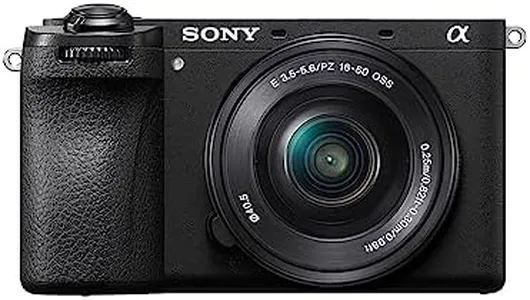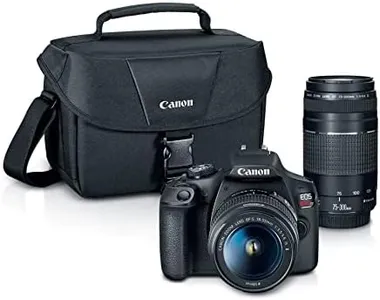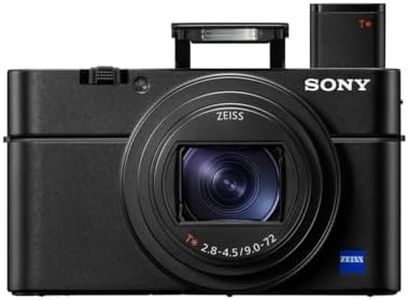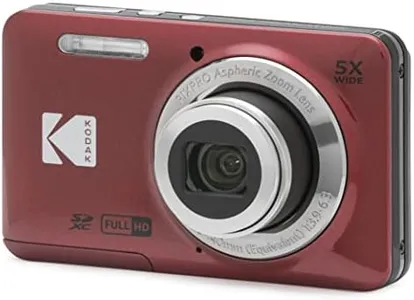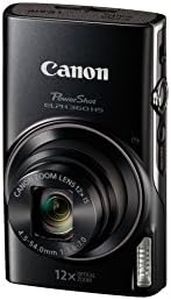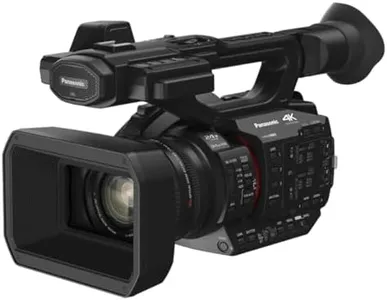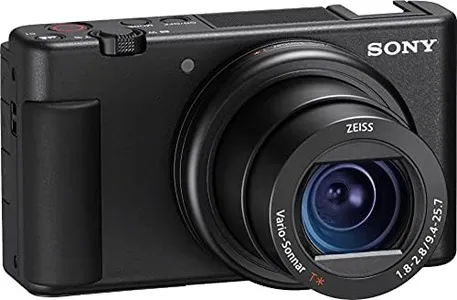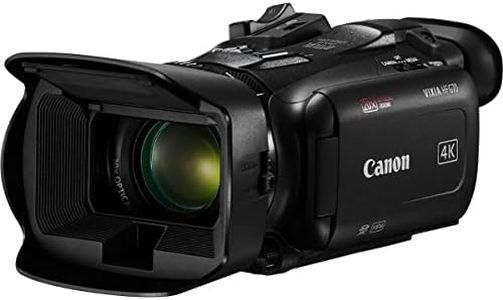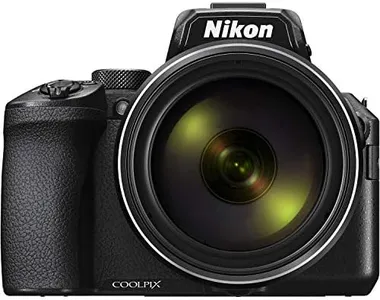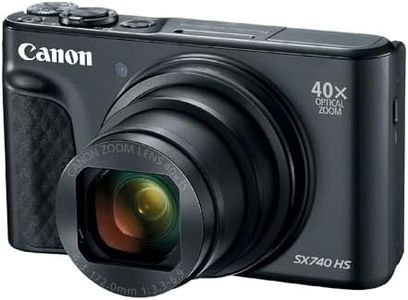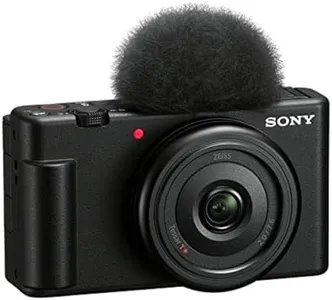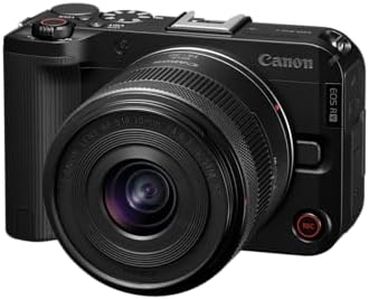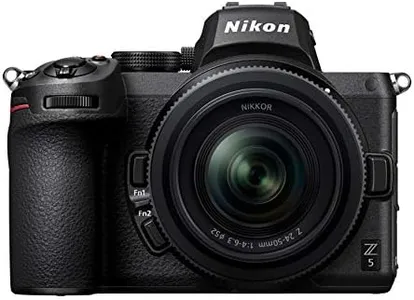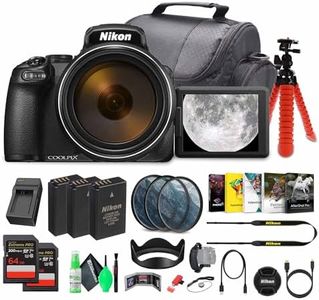10 Best Zoom Cameras 2025 in the United States
Our technology thoroughly searches through the online shopping world, reviewing hundreds of sites. We then process and analyze this information, updating in real-time to bring you the latest top-rated products. This way, you always get the best and most current options available.

Our Top Picks
Winner
Sony Alpha 7 IV Full-frame Mirrorless Interchangeable Lens Camera with 28-70mm Zoom Lens Kit
Most important from
1055 reviews
The Sony Alpha 7 IV is a powerful full-frame mirrorless camera that stands out in the zoom camera category, especially for those who value high-quality images and video. With a 33MP full-frame Exmor R sensor, it captures detailed photos, and the BIONZ XR image processing engine enhances performance significantly, making it suitable for both photography and videography enthusiasts. Its 8x optical zoom, with a maximum focal length of 70mm, allows for flexibility in capturing subjects from various distances, which is great for dynamic shooting scenarios.
In terms of video capabilities, the Alpha 7 IV impresses with its ability to record in 4K at 60p with 10-bit 4:2:2 color depth, offering professional-grade video quality. The sensor-shift image stabilization helps to minimize shakes, which is handy for both video recording and handheld photography, making it easier for users to achieve smooth results.
There are a few drawbacks to consider. While the camera is packed with features, it may have a steeper learning curve for beginners unfamiliar with manual settings or photography jargon. Additionally, the size and weight of the camera might be cumbersome for those looking for a lightweight option for casual shooting or travel. Lastly, although it performs well in various shooting conditions, users should note that the battery life may not be the longest, particularly when recording high-resolution video.
Most important from
1055 reviews
Sony Alpha 6700 – APS-C Interchangeable Lens Camera with 26 MP Sensor, 4K Video, AI-Based Subject Recognition, Log Shooting, LUT Handling and Vlog Friendly Functions and 16-50mm Zoom Lens
Most important from
444 reviews
The Sony Alpha 6700 is a compact and lightweight mirrorless camera with a 26-megapixel APS-C sensor, which is great for capturing detailed photos with vibrant colors. It includes a 16-50mm zoom lens, offering a modest optical zoom range suitable for everyday shooting but not for long-distance telephoto needs. Its sensor-shift image stabilization helps reduce blur from shaky hands, a plus for both photos and videos. Autofocus is a strong point here, featuring 759 focus points and advanced AI-based tracking that can detect faces and eyes, making it easier to keep subjects sharp even when moving.
Video capabilities are impressive, supporting high-quality 4K recording at up to 60 frames per second and even slow-motion 4K at 120 fps, which is ideal for vloggers and content creators looking for smooth, professional footage. The camera’s battery life is average, powered by a lithium-ion battery, so carrying a spare might be necessary for long shoots. It also has a fully articulating touchscreen, useful for selfies and vlogging.
While the zoom range is somewhat limited, this camera excels in image quality, autofocus speed, and video performance, fitting well for enthusiasts and professionals wanting a versatile, travel-friendly camera. However, it’s not weather-sealed and might lack the zoom reach some users expect, so it’s best suited for general photography and video rather than specialized telephoto or rugged outdoor shoots.
Most important from
444 reviews
Canon EOS Rebel T7 DSLR Camera|2 Lens Kit with EF18-55mm + EF 75-300mm Lens, Black
Most important from
8163 reviews
The Canon EOS Rebel T7 is a solid choice for those entering the world of DSLR photography and looking for a zoom camera. It comes as a kit with two lenses: an 18-55mm and a 75-300mm, providing a good range of optical zoom for versatile shooting options. The 24.1-megapixel CMOS (APS-C) sensor delivers high-resolution images, and the built-in image stabilization helps to reduce blurriness, especially in low-light conditions or at longer focal lengths.
With an ISO range of 100-6400 (expandable to 12800), it's capable in various lighting situations, though it might struggle a bit in very low light without additional lighting equipment. The 9-point autofocus system, along with the Dual Pixel CMOS AF and eye detection, ensures decent focus accuracy and speed, though not as advanced as some higher-end models. For video, it records in Full HD 1080p, which is sufficient for most casual and beginner videographers. However, it's not 4K, which some users might prefer for higher quality video recording.
The battery life is decent, allowing roughly 500 shots per charge, but could be limiting during extended shooting sessions or trips. The camera is relatively lightweight at 3 pounds, making it portable and easy to handle. Additional features like built-in Wi-Fi and NFC facilitate easy sharing and remote control, adding to its convenience. The Rebel T7 does have some limitations, such as its modest continuous shooting speed of 3 frames per second, making it less ideal for fast-action photography. It also lacks advanced weather sealing, so caution is needed in adverse conditions. In summary, the Canon EOS Rebel T7 is a capable zoom camera for beginners, offering good image quality, essential features, and ease of use, though it may not meet all the needs of more advanced users.

